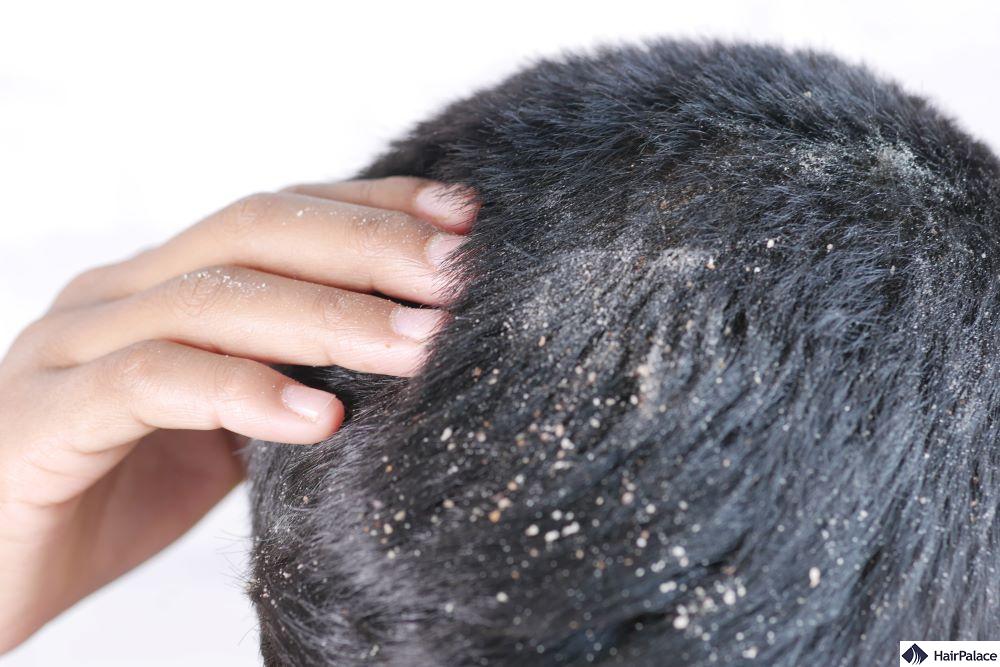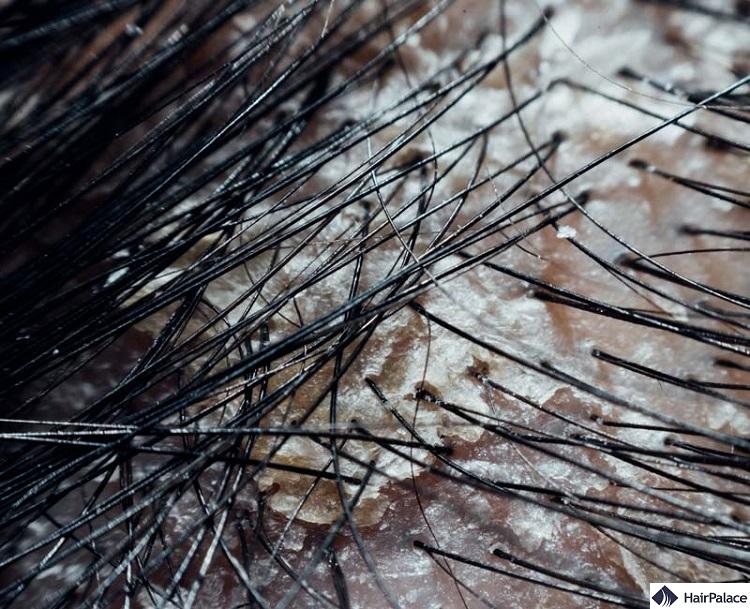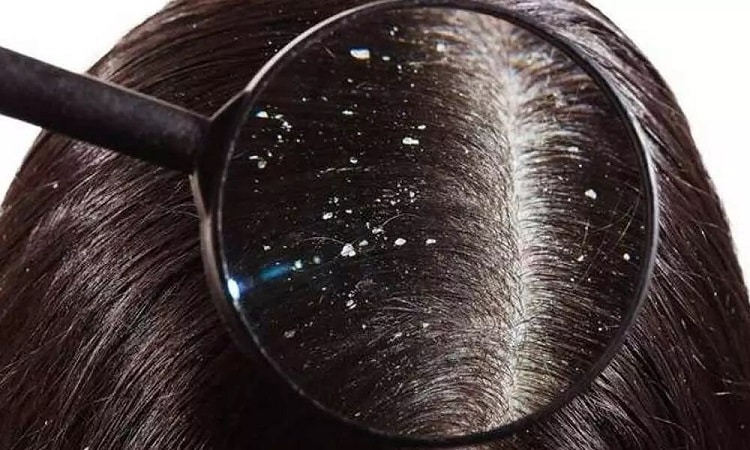Scalp Psoriasis vs Dandruff: Know the Difference

Scalp conditions can be frustrating, especially when they cause visible flakes, itching, and discomfort.
Among the most common are scalp psoriasis and dandruff, two issues that may look similar at first glance but are actually very different in nature.
While both affect the scalp and can have a strong impact on confidence and daily life, they vary in how they develop, how severe they can become, and how they are best managed.
In this article, we’ll explore the symptoms, underlying mechanisms, and medical treatment options, while highlighting the key differences that set these conditions apart.
- What is scalp psoriasis?
- What is dandruff?
- Scalp psoriasis vs dandruff
- Scalp psoriasis treatment
- How to get rid of dandruff

What is scalp psoriasis?
Scalp psoriasis is a chronic, non-contagious skin condition that affects the scalp and hairline, sometimes spreading to nearby areas.
It is a common psoriasis type that can range from mild, with fine scaling, to severe, with thick plaques covering large areas.
The condition develops when skin cells multiply too quickly, forming raised red patches with silvery-white scales.
These plaques can be accompanied by itching, burning, soreness, and skin tightness.
In some cases, the scaling is so thick and adherent that it makes the scalp feel crusted or “caked.”
Because the affected skin becomes inflamed, the scalp can also feel tender and painful to touch.
The visible flakes may look like mild dandruff but are usually more noticeable.
They can cause embarrassment or self-consciousness in social situations.
In advanced cases, scratching or harsh plaque removal can damage the skin and affect hair growth temporarily.
However, scalp psoriasis itself does not cause permanent hair loss.
Scalp psoriasis can appear episodically, with flare-ups alternating with periods of improvement or remission.
What causes psoriasis on scalp?
Scalp psoriasis develops because the skin’s natural renewal process becomes overactive.
Normally, skin cells take about a month to grow, move to the surface, and shed.
In psoriasis, this cycle accelerates dramatically, causing new cells to build up within days instead of weeks.
The excess cells pile up on the scalp’s surface.
This rapid skin turnover is caused by the immune system, which wrongly triggers excessive cell growth and inflammation.
The immune response explains why the scalp feels red, sore, and itchy, along with scaly patches.
Although the exact cause is unclear, psoriasis results from both genetic factors and environmental triggers.
What is dandruff?

Dandruff is a chronic condition, but generally a mild scalp condition marked by the presence of visible flakes of dead skin that shed from the scalp and hair.
These flakes can vary in size and appearance; some may be small and powdery, while others are larger and slightly greasy.
They often collect on the shoulders or clothing, which makes dandruff particularly noticeable and sometimes distressing for those affected.
In addition to a flaky scalp, dandruff is frequently accompanied by itching, scalp irritation, and a sensation of dryness or tightness.
The itching can lead to scratching, which may further irritate the scalp and, in more pronounced cases, cause redness or small abrasions.
While dandruff usually does not cause pain, the ongoing itch-scratch cycle can make the scalp feel sensitive and uncomfortable.
It can be influenced by factors such as seasonality, with many people noticing that dandruff flakes worsen in cold, dry weather and ease in warmer, more humid conditions.
Hair care routines also play a role, as the appearance of flakes and scalp irritation may fluctuate depending on how frequently the hair is washed.
Managing dandruff typically requires consistent scalp care, since it rarely disappears completely on its own.
What causes dandruff?
Normally, cells from the scalp’s surface mature and fall off in a barely noticeable cycle.
In dandruff, this cycle becomes unbalanced, causing clusters of dead skin cells to come away more quickly and visibly, which is why they appear as flakes in the hair and on clothing.
Several key factors contribute to this imbalance:
- Skin microflora imbalance: The scalp naturally hosts microorganisms, including a yeast-like fungus (Malassezia). In dandruff, this organism can thrive more than usual, irritating the scalp and interfering with normal skin shedding.
- Sebum activity: Excess sebum can create an environment that encourages flaking skin, while too little oil may lead to dryness and increased shedding.
- Individual sensitivity: Not everyone reacts the same way to these conditions. Some people’s scalps are more reactive, meaning even a small imbalance can trigger noticeable dandruff.
- Environmental and lifestyle influences: Factors like cold, dry weather, stress, fatigue, or the use of harsh hair products can worsen dandruff flare-ups.
Dandruff is not caused by poor hygiene, though infrequent washing may make flakes more obvious because they build up in the hair.
It is also not contagious. Instead, it reflects the scalp’s response to internal and external conditions that influence skin renewal and oil balance.
Scalp psoriasis vs dandruff
Dandruff and scalp psoriasis are both conditions that affect the scalp, but they differ in their appearance, severity, and impact on daily life.
Let’s explore how to tell the difference between the two.
Dandruff usually appears as small, loose white or yellowish flakes that fall easily from the scalp and hair.
It often causes mild itching and irritation, but not serious inflammation or thickening of the skin.
While dandruff can persist, it is generally mild and manageable with proper scalp care.
Scalp psoriasis produces thicker, raised plaques of skin covered with silvery-white scales.
These plaques may extend beyond the hairline to the forehead, neck, or ears.
They often cause redness, soreness, and intense itching on the scalp.
In severe cases, the scalp can feel tight, painful, and irritated.
While dandruff is mostly a cosmetic and comfort concern without long-term consequences, scalp psoriasis is a chronic inflammatory condition.
It can flare and subside over time, sometimes interfering with hair care and, in extreme cases, leading to temporary hair shedding.
Psoriasis generally has a greater physical burden and more complex management needs than dandruff.
Scalp psoriasis treatment

The appropriate treatment plan for scalp psoriasis focuses on reducing inflammation, slowing the overproduction of skin cells, and easing symptoms like itching, soreness, and flaking.
Because the scalp is covered with hair, treatments must be specially formulated to penetrate through it and reach the affected skin.
For mild cases, medicated shampoos are often the first step to manage scalp psoriasis.
These typically contain ingredients like coal tar or salicylic acid.
Using these regularly can keep symptoms under control, though they usually need to be combined with other therapies if plaques are thicker or more persistent.
For moderate to severe cases, topical treatments are commonly prescribed.
These include corticosteroid solutions, foams, gels, or sprays that reduce inflammation and itching, as well as vitamin D analogues (such as calcipotriol) that help regulate skin cell turnover.
In many cases, a combination of topical steroid and vitamin D therapy is used to maximise results.
For severe, resistant, or widespread scalp psoriasis, systemic treatments are available.
These may include traditional oral medications such as methotrexate, cyclosporine, or acitretin, or newer biologic therapies.
These options are typically reserved for patients with extensive symptoms or when psoriasis affects multiple areas of the body, not just the scalp.
How to get rid of dandruff
Getting rid of dandruff usually requires a consistent scalp care routine rather than a one-time fix, since it tends to be a recurring condition.
The most effective approach is to use a specialised dandruff shampoo designed to reduce flaking and intense itching.
These often contain active ingredients to treat dandruff, such as:
- Zinc pyrithione: helps reduce scalp irritation and controls yeast overgrowth.
- Ketoconazole: an antifungal that works well even in more stubborn cases.
- Selenium sulfide: slows skin cell turnover and reduces flaking.
- Coal tar: decreases scaling by slowing down cell shedding.
- Salicylic acid: softens and loosens flakes so they wash away more easily.
These over-the-counter shampoos are usually most effective when used several times a week, left on the scalp for a few minutes before rinsing.
Once symptoms improve, they can often be used less frequently to keep dandruff under control.
Beyond medicated products, maintaining good scalp hygiene, such as washing hair regularly to remove oil and buildup, can make a big difference.
It’s also important to avoid overly harsh products or excessive styling, which can lead to irritated skin.
Using a gentle, moisturizing conditioner or oil on the lengths of the hair (not the scalp itself) can help prevent dry skin without worsening flaking.


